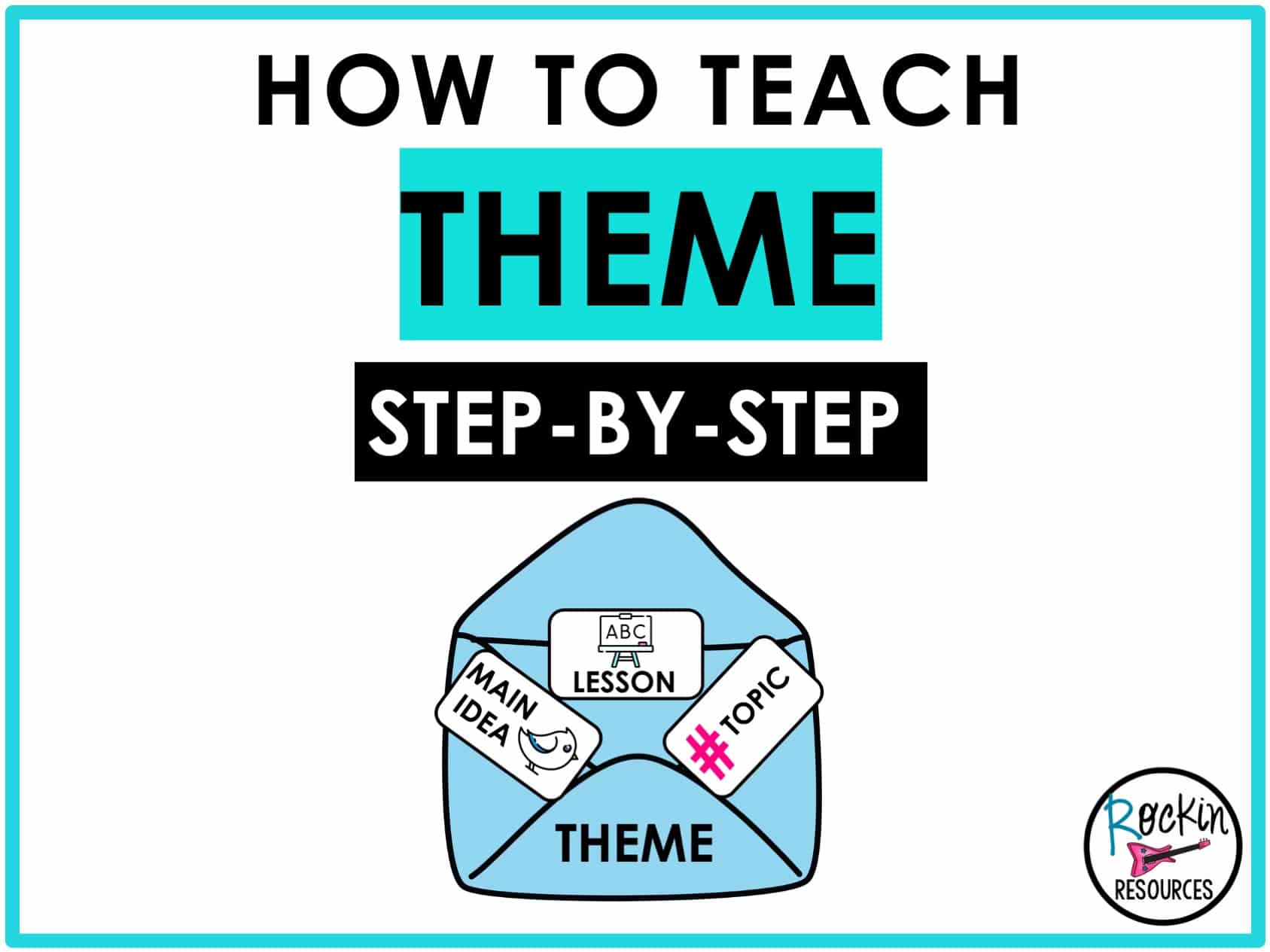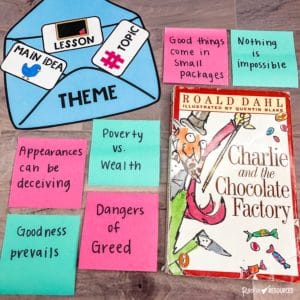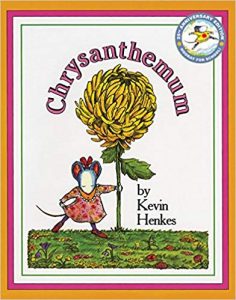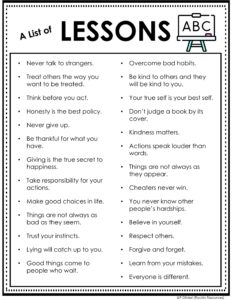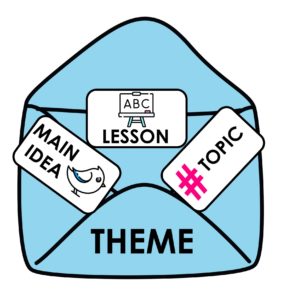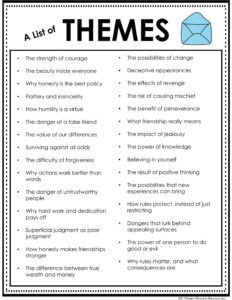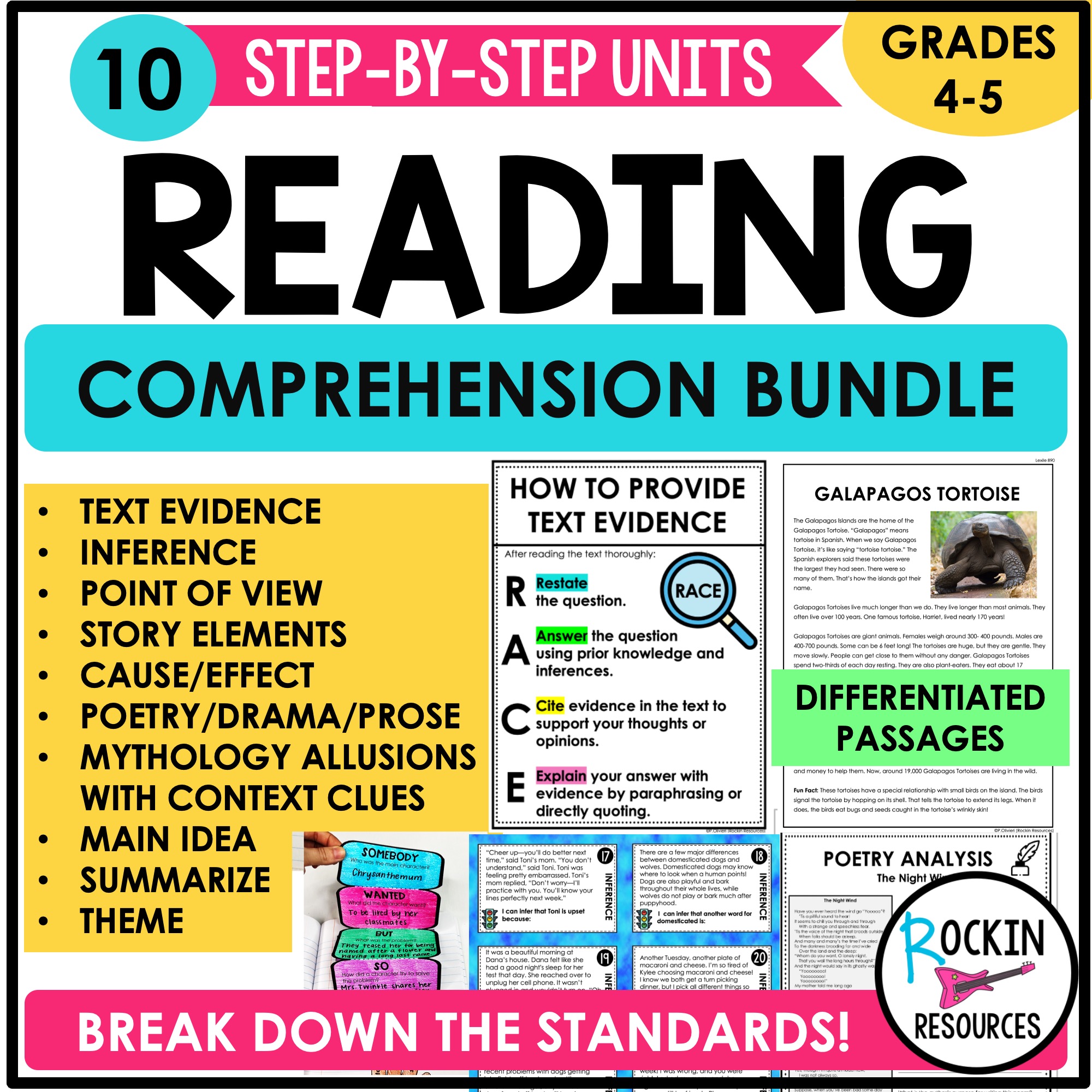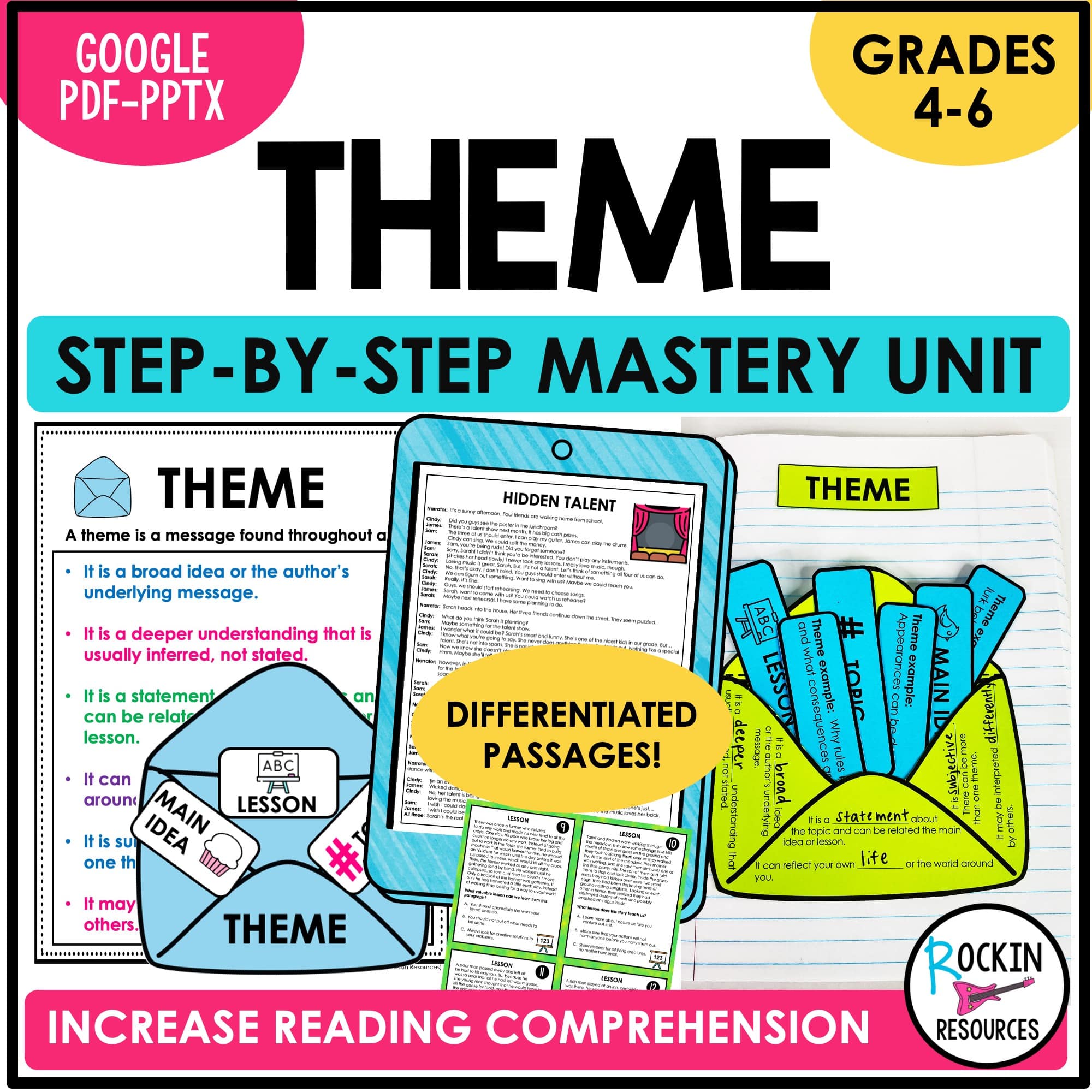Are your students having trouble identifying theme within a story? This step-by-step process scaffolds through several reading comprehension skills to help students get a thorough understanding of theme. Students will be able to determine the theme of a story, poem, or drama from details in the text by first learning basic knowledge of story elements, summarizing, main idea, topic, and lesson! Read on to see how to introduce them effectively for teaching theme!
To help students understand theme, they will first need to build basic knowledge of story elements, summarizing, main idea, topic, and lesson. Teach the following reading skills one day at a time. Each skill will build upon the prior one and prepare students to understand THEME. For each step of the process, take time to:
- Teach with an anchor chart
- Discuss as a whole group
- Use mentor text
- Model examples
- Take notes in a notebook. (I prefer interactive notebooks!)
- Add examples in the notebook
- Practice identifying the steps in small groups
- Assess for understanding
To begin, read a mentor text to students. I will be using Chrysanthemum as an example for all of the lessons in this post. Since each skill builds upon the last, follow the steps in this order:
1. Story Elements
To understand theme, students must first have a basic knowledge of Story Elements. These are explicit details (directly stated) in a story: characters, setting, problem, solution.
- Characters – Any person or animal in the story.
- Setting – Where and when the story takes place
- Problem – An issue or confict in the story.
- Solution – How the problem gets solved.
Examples using Chrysanthemum:
- Characters: Chrysanthemum, Victoria, Jo, Mrs. Twinkle, her parents
- Setting: At the school and after school at her home
- Problem: The children are teasing Chrysanthemum for her name being a flower and being so long.
- Solution: Mrs. Twinkle shares her flower name and names her baby after Chrysanthemum.
Other mentor texts that work well for teaching story elements:
Mufaro’s Beautiful Daughters by John Steptoe
Word After Word by Patricia MacLachian
2. Summarize
The next step to understanding theme is to summarize the text. Retell the basic story elements in your own words. Don’t include every event in the story. Point to the fingers on your hand to remember the five words used to help write a summary: somebody, wanted, but, so, then.
- Somebody: Who was the main character?
- Wanted: What did the character want?
- But: What was the problem?
- So: How did a character try to solve the problem?
- Then: What was the solution to the problem?
Examples using Chrysanthemum:
- Somebody: Chrysanthemum
- Wanted: To be liked by her classmates
- But: They teased her for being named after a flower and having a long last name.
- So: Mrs. Twinkle shares her name Delphinium after a flower.
- Then: She names her baby Chrysanthemum.
Other mentor texts that work well for teaching summary:
Jumanji by Chris VanAllsburg
Grandpa’s Teeth by Rod Clement
3. Main Idea
To continue the scaffolding approach, students should have a solid understanding to identify the main idea of the text. I like to think of Twitter with telling a main idea because you don’t want it lengthy.
- Pretend you are writing a tweet about your story.
- Summarize the main idea in one sentence.
- Don’t retell every event in the story.
- What does the author want you to know?
- What is the story mostly about?
Example using Chrysanthemum:
Chrysanthemum gets teased for her name.
Other mentor texts that work well for teaching main idea:
Ivan: The Remarkable Story About Shopping the Mall Gorilla by Katherine Applegate
4. Topic
To continue with the steps leading to theme, students need to be able to find the topic of the text. I like to use a hashtag for a visual!
- Think about writing a hashtag.
- It is an important subject in the story.
- It is usually one word.
- It is often related to an issue or idea found in the story.
Examples using Chrysanthemum:
bullying and belonging
A list of topics:
5. Lesson
Learning the moral or lesson to a story gets you a step closer to theme.
- Think about what the author wants you to learn from the story.
- It is the moral principle of a story.
- It teaches the difference between right and wrong.
- It is often explicitly stated at the end of the story.
Examples using Chrysanthemum:
Treat others the way you want to be treated.
Don’t judge a book by its cover.
Believe in yourself.
A list of lessons
Other mentor texts for teaching lessons:
The Classic Treasury of Aesop’s Fables
6. Theme
Through exploring all the previous reading comprehension skills, you have prepared students to learn about theme.
Theme is an implicit skill (indirectly stated). Students will need to dip deep into the text for higher-order thinking and synthesize (merge prior knowledge and elements from the text to reflect on perspectives and insights). Explain to students that theme is a message in the story and that there is no right answer. If they can supply evidence from the text, their interpretation of the theme is justified.
Some questions to consider:
What message does the author hide and want you to find?
How can you relate to the theme?
Does the theme remind you of anything you’ve watched or read?
- It is a broad idea or the author’s underlying message.
- It is a deeper understanding that usually is inferred, not stated.
- It is a statement about the topic and can be related to the main idea or lesson.
- It can reflect your own life or the world around you.
- It is subjective. There can be more than one theme.
- It may be interpreted differently by others.
Examples using Chrysanthemum:
The value of our differences.
Superficial judgment as poor judgment.
A list of themes
Other mentor texts that work well for teaching theme:
The Librarian from Basra by Janette Winter
The One and Only Ivan by K.A. Applegate
I hope this step-by-step approach was an effective way to introduce theme to your student(s)! If you would like an all-inclusive teaching resource including these ideas along with anchor charts, passages, interactive notebooks, task cards, practice pages, a project and more, click below!
Are you looking for a bundle of reading units? This bundle includes Inference, Text Evidence, Theme, Mythology, and Cause and Effect! Click below to learn more.
SEE SIMILAR BLOGS:
DISCOVER RELATED RESOURCES:
-
Reading Skills Bundle for Reading Comprehension
Original price was: $14.97.$12.00Current price is: $12.00. -
Step-by-Step Reading Skills for Reading Comprehension Bundle 1
Original price was: $83.92.$68.99Current price is: $68.99. -
Step-by-Step Theme Unit
$9.99

